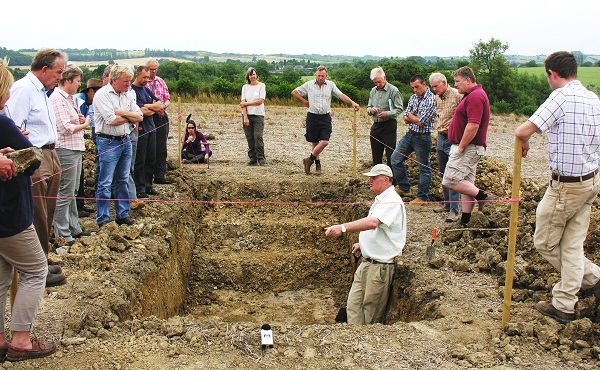Why is this important?
Adaptation planning is relevant for all organisations and localities; although planning activities may be led by local authorities, adaptation benefits everyone and needs to involve a range of organisations, as well as communities themselves, to be fully effective.

Farmers discussing the challenges of looking after the land in a changing climate © Climate UK
On this page:
Adaptation planning for everyone
This includes service providers in health and social care, housing, emergency services and voluntary and community organisations. This website provides information about specific vulnerable groups, such as: older people, people in poor health, people living in certain types of housing and people on low incomes. While the dedicated sections may be particularly relevant for people working in specific sectors, service providers need to have a wider appreciation of the range of factors affecting a person’s vulnerability and the measures which can be taken in response. Since local adaptation planning helps to frame collective action and make it more effective, it is therefore relevant for all.
Local authorities and other local organisations have a crucial part to play in ensuring that local communities are as prepared as they can be for the impacts of future climate change. This comes both through the services they provide directly, and their role in enabling and facilitating change in their area, through working in partnership with others. The decisions they make and services they deliver are already being affected by extreme weather events and improving resilience is more cost-effective and fairer than investing substantial resources in recovery1. Whilst buildings and infrastructure can be repaired relatively quickly, the longer term impacts of extreme weather events on local economies and individuals’ health and wellbeing may take many years to overcome. Climate change is likely to exacerbate existing disadvantage for some groups and affect new groups too, for example, due to people facing problems insuring their homes due to flooding, or people’s livelihoods being disrupted by climate change impacts.
Duties and responsibilities
The Climate Change Act (2008) put in place a process for assessing and managing the risks and opportunities associated with climate change in the UK. The first UK Climate Change Risk Assessment (CCRA) was produced in 2012 and the first National Adaptation Programme (NAP) in 2013. The CCRA is a statutory requirement and will be produced on a five yearly cycle. The NAP highlights the need for individuals, communities and organisations to understand the risks from climate change and work together to put in place long-term plans to manage these risks and become ‘climate ready’. It stresses the need to raise and maintain the profile of adaptation within local authorities and calls for action to embed climate resilience across services and responsibilities.
The National Planning Policy Framework, 2012 sets out clear requirements for local planning authorities stating that they ‘should adopt proactive strategies to mitigate and adapt to climate change’. It also specifies the need to ensure that new development is not at risk of and does not contribute to flooding and coastal erosion. In addition, the National Flood and Water Management Act, 2010 places specific responsibilities on local authorities in relation to flood risk.
The Civil Contingencies Act (2004) establishes a clear set of roles and responsibilities for those involved in emergency preparation and response at the local level. It identifies local authorities, emergency services and NHS bodies as Category 1 responders, which have a number of responsibilities. These include: identifying the risk of emergencies occurring; putting in place emergency plans and business continuity arrangements, and advising others (including voluntary organisations) on such arrangements. Local Resilience Forums (LRFs) were established following the introduction of the Act. These multi-agency bodies develop Community Risk Registers and work with Category 1 responders to ensure that the required level of civil protection is provided. LRFs should consider potential severe weather events and their potential impacts on vulnerable communities.
See also the presentation Why climate justice matters, which includes summaries of the relevant legislation. There are different versions of the presentation for Scotland and Wales which detail the different legislative context in each case.
References
- Nicholas Stern (2007) The Economics of Climate Change: The Stern Review

Built by:

© 2014 - Climate Just
Contact us
